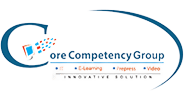How to Reduce Employee Training Costs
Rohit Kumar
13 May, 2024

In today's competitive business environment, the costs associated with employee training are on the rise. As organizations seek to attain and maintain a competitive edge, the need for strategic investment in training is more critical than ever. This strategic approach ensures that employees meet industry standards and adapt swiftly to evolving market demands.
However, managing these costs without compromising the quality and effectiveness of training programs poses a significant challenge. The financial investment required for comprehensive training initiatives is a prominent concern for companies across all sectors. Corporate leaders must adopt innovative strategies to curb these expenses while achieving their developmental goals.
This article explores various proven methods to reduce employee training costs. Organizations can significantly decrease their expenditures by focusing on strategic alignment, technological adoption, and internal resource utilization. These strategies promise to retain, if not increase, the return on investment from training endeavors, ensuring that companies remain adaptable and efficient in a rapidly changing business landscape.
Understanding Training Costs
Understanding the full spectrum of training costs is the first step toward effectively managing and reducing these expenses. Employee training costs can be categorized into two main types: direct and indirect costs. Each plays a crucial role in training programs' overall budgeting and effectiveness.
Direct Costs
Direct costs are the most straightforward to identify and manage. These include:
-
Course Fees: Payments to external providers for training sessions or access to specialized courses
-
Materials: Costs associated with physical and digital resources such as textbooks, workbooks, and online materials
-
Technology Infrastructure: Expenses related to acquiring and maintaining technology platforms like Learning Management Systems (LMS) that support online training delivery
Indirect Costs
Indirect costs are less visible but can significantly impact the overall training budget. These include:
-
Opportunity Costs: Potential revenue could have been generated if employees had not attended training sessions. This aspect considers employees' time spent training instead of contributing to their regular work tasks.
-
Productivity Losses: Short-term drops in productivity occur when employees divert their focus from daily tasks to participate in training sessions. This is particularly relevant in fast-paced industries where time equals output.
-
Adaptation to Technology: Costs incurred as employees learn to navigate new software or tools introduced during training sessions, which may slow down their usual pace of work.
Balancing these costs requires strategic planning and a thorough understanding of how each cost type contributes to the organization's goals. By pinpointing where the money goes, companies can make informed decisions on what aspects of training to invest in, what to modify, and where to cut costs without undermining the quality of the training provided. This knowledge forms the foundation for implementing more cost-effective training practices aligned with budgetary constraints and corporate objectives.
Strategic Reduction of Training Costs
Strategic reductions in training costs involve carefully considering both the methods used and the relevance of the content provided. Organizations can implement several strategies to ensure that training investments align with organizational goals while controlling expenses.
Align Training with Strategic Goals
Aligning training with strategic goals ensures that every dollar spent contributes directly to the organization’s objectives. Training should meet immediate skills gaps and support long-term business goals. This alignment involves:
-
Evaluating training programs to ensure they are directly linked to key performance indicators
-
Eliminating programs that do not have measurable impacts on business objectives
-
Protecting and prioritizing training that supports crucial functions such as compliance, revenue generation, and customer retention
Optimize Training Modalities
Adjusting the delivery methods of training programs can lead to significant cost savings. Two effective strategies include:
-
Shift to Online Training: Moving traditional classroom training to online platforms can dramatically reduce costs for physical venues, travel, and printed materials. Online training offers the flexibility to scale and adapt learning materials quickly and efficiently.
-
Embrace Virtual Training: Implementing virtual workshops instead of in-person sessions can save logistics costs while offering interactive and engaging learning experiences. Advanced webinar tools can simulate small group interactions and foster collaboration without the physical presence requirements.
By incorporating these strategies, organizations can reduce the costs associated with employee training and enhance the effectiveness of their training programs. This strategic approach ensures that training budgets are used judiciously, focusing on areas that offer the highest return on investment and align closely with the company’s strategic vision.
Leveraging Technology and Innovation
Leveraging technology and innovation provides a pathway to reducing costs while enhancing learning outcomes. Adopting cutting-edge tools and platforms not only streamlines the delivery of educational content but also increases its accessibility and effectiveness.
Embrace eLearning and Microlearning
Integrating eLearning solutions has transformed the traditional training landscape, offering both cost-efficiency and compelling educational experiences. Key benefits include:
-
Scalability: eLearning platforms can accommodate unlimited participants, eliminating the need for multiple sessions
-
Accessibility: Employees can access training modules from anywhere, fitting learning into their schedules without disrupting workflow
-
Cost Reduction: eLearning cuts travel venue and instructor fees by delivering training directly through digital platforms
Microlearning further enhances these benefits by breaking information into small, manageable chunks that are easier for employees to absorb and retain. This method is particularly effective for:
-
Engagement: Short, focused sessions help maintain learner attention and motivation
-
Retention: Frequent, bite-sized learning reinforces knowledge more effectively than occasional, lengthy sessions
-
Flexibility: Micro-modules can be quickly updated or modified to address emerging needs or feedback
Utilize Learning Management Systems (LMS)
Modern Learning Management Systems (LMS) like Core Competency LMS are pivotal in deploying and tracking online training programs. An LMS provides:
-
Comprehensive Tracking: Detailed reports on user progress and engagement help tailor future training initiatives
-
Cost Management: LMS platforms reduce administrative burdens by automating many aspects of the training process, such as scheduling, notifications, and resource allocation
-
Enhanced Interaction: Features like forums, quizzes, and interactive content promote active learning and better knowledge transfer
By incorporating these technological solutions, organizations can deliver high-quality training that is both cost-effective and aligned with corporate goals. This strategic use of technology reduces direct training costs and minimizes downtime and productivity losses associated with traditional training methods.
Utilizing In-House Resources
Harnessing in-house resources is a cost-effective approach to training that taps into existing expertise and fosters a culture of continuous learning. By empowering employees to share their knowledge and skills, companies can reduce the need for external training resources.
Promote Peer-to-Peer Learning
Creating an environment that encourages peer-to-peer learning has several advantages:
-
Cost Savings: Minimizes the expense of hiring external trainers and consultants
-
Relevance: Ensures that the training directly applies to the organization's specific challenges and contexts
-
Engagement: Increases employee engagement and fosters a sense of community as employees actively participate in each other’s development
Implementing structured peer-to-peer learning sessions, where employees lead workshops or seminars on their areas of expertise, promotes a knowledge-sharing culture that benefits the entire organization.
Develop Internal Training Capabilities
Investing in the development of internal training teams offers long-term benefits:
-
Expertise Utilization: Utilizes the specialized knowledge and skills of existing employees who understand the company’s processes and culture better than external parties
-
Customization: Allows to customize training programs to meet the organization's precise needs
-
Rapid Deployment: Facilitates the swift adaptation and deployment of training initiatives in response to evolving organizational needs
Training internal staff to undertake these roles builds a capable, multi-skilled workforce and ensures that training methods and content are directly aligned with strategic goals.
In summary, utilizing in-house resources for training not only cuts costs but also enhances the relevance and effectiveness of the training programs. This approach leverages the existing talents and expertise within the organization, making it a potent strategy for companies aiming to optimize their training expenditures while fostering an enriching learning environment.
Measuring and Boosting Training ROI
Effectively measuring and enhancing the return on investment (ROI) for training programs is crucial to justifying the costs and continuously improving the training strategies. Here are the steps and methodologies that can be applied to ensure training meets its intended goals and provides measurable business benefits.
Implementing Effective Assessment Tools
To accurately gauge the effectiveness of training programs, it is essential to implement robust assessment tools:
-
Pre- and Post-Training Assessments: Evaluate the skills and knowledge of employees before and after the training to measure the learning gains
-
Feedback Surveys: Collect feedback from participants to identify areas of improvement and to assess the immediate impact of the training
-
Performance Metrics: Monitor changes in performance metrics related to job functions that were the focus of the training
These tools help pinpoint the effectiveness of each training session and provide data to refine future training efforts.
Continuous Improvement and Feedback Loop
The process of enhancing training ROI is ongoing and benefits significantly from a structured feedback loop:
-
Iterative Improvements: Continuously use the data gathered from assessment tools to improve training content and delivery methods
-
Stakeholder Feedback: Regularly consult with key stakeholders to align the training outcomes with business objectives and ensure that training is responsive to the organization's evolving needs
-
Long-term Tracking: Extend the evaluation period to track the long-term effects of training on performance and productivity
By integrating these practices, organizations can create a dynamic training program that reduces costs and maximizes learning outcomes and business impact. This strategic approach to measuring and enhancing training ROI ensures that companies invest wisely in employee development, leading to sustained organizational growth and success.
In conclusion, effectively reducing employee training costs while maintaining or enhancing the quality of training is crucial for any organization committed to continuous improvement and development. By understanding and managing direct and indirect training costs, strategically leveraging technology, and utilizing in-house resources, companies can significantly lower expenses without compromising the outcomes of their training programs.
Further enhancing the return on investment through systematic measurement and constant refinement ensures that training remains cost-effective and beneficial. Regular assessment and adaptation of training strategies in response to feedback and performance metrics support an organization’s agility and alignment with its strategic objectives.
Core Competency stands ready to support your endeavors in streamlining and enhancing your training processes. With our advanced LMS, custom content development services, and a wide range of e-learning solutions, we can help you achieve more with less. Contact us today to discuss your business requirements, or book a demo to see our solutions.




